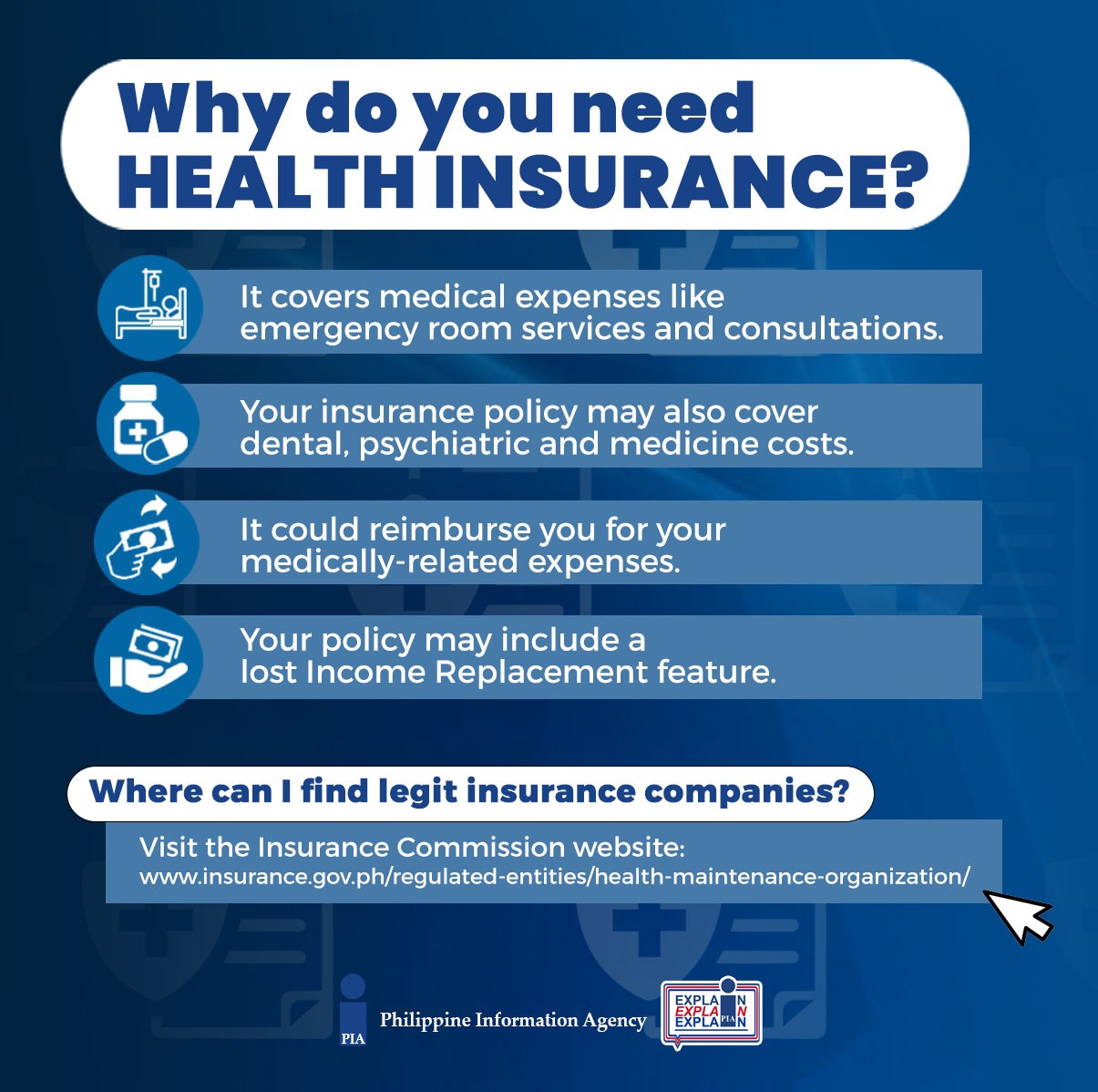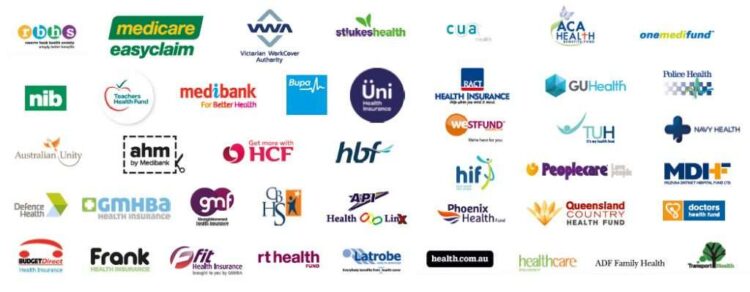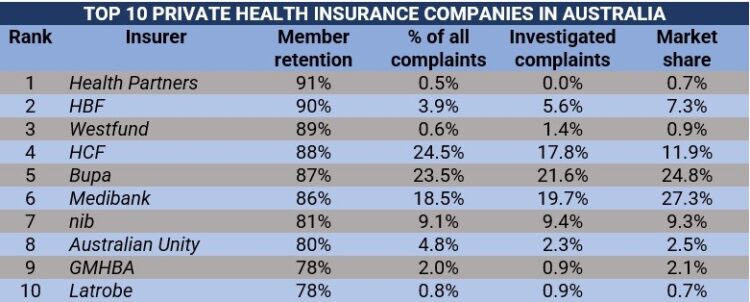
- Understanding Health Insurance Basics
- Determining Eligibility and Enrollment Period
- Gathering Necessary Information and Documents
- Choosing a Health Insurance Plan
- Completing the Application Process
- Understanding Premiums, Deductibles, and Co-pays
- Navigating the Health Insurance Marketplace
- Accessing Resources and Support
- Ultimate Conclusion
- Key Questions Answered: How Do I Apply For Health Insurance
How do I apply for health insurance? It’s a question many people ask, and the answer can seem complicated. Navigating the world of health insurance plans, eligibility requirements, and enrollment processes can feel overwhelming. But don’t worry, this guide will walk you through the process step-by-step, making it easy to understand and apply for the coverage you need.
From understanding the basics of health insurance plans to gathering necessary documents and choosing the right plan, we’ll cover everything you need to know. We’ll also discuss important aspects like premiums, deductibles, and co-pays, helping you make informed decisions about your health insurance.
Understanding Health Insurance Basics

Health insurance is a crucial aspect of financial planning, especially in today’s healthcare landscape. Understanding the basics of health insurance is essential for making informed decisions about your coverage.
Types of Health Insurance Plans
Health insurance plans can be categorized into various types, each offering different coverage options and features. Here’s a breakdown of some common plan types:
- Health Maintenance Organization (HMO): HMOs offer comprehensive coverage within a specific network of providers. They typically require you to choose a primary care physician (PCP) who acts as your gatekeeper for referrals to specialists. HMOs generally have lower premiums compared to other plans but may have limited out-of-network coverage.
- Preferred Provider Organization (PPO): PPOs offer greater flexibility in choosing healthcare providers, both within and outside their network. While in-network care usually comes at a lower cost, PPOs allow you to see out-of-network providers with higher out-of-pocket expenses. They typically have higher premiums than HMOs.
- Exclusive Provider Organization (EPO): EPOs resemble HMOs but provide limited out-of-network coverage. They offer a balance between cost-effectiveness and provider choice, but your options may be more restricted compared to PPOs.
Key Features of Health Insurance Plans
Each health insurance plan type has distinct features that influence your coverage and cost.
- Coverage: This refers to the types of medical services covered by the plan, such as preventive care, hospitalization, surgery, prescription drugs, and mental health services.
- Cost: The cost of health insurance is determined by factors such as your age, location, health status, and plan type. Key cost components include premiums, deductibles, copayments, and coinsurance.
- Network: This refers to the group of healthcare providers (doctors, hospitals, pharmacies) that participate in the insurance plan. Your plan’s network dictates which providers you can access without incurring higher out-of-pocket costs.
Common Health Insurance Benefits
Health insurance plans typically provide various benefits to cover healthcare expenses.
- Preventive Care: This includes services aimed at preventing illness, such as annual checkups, vaccinations, and screenings. Many plans cover these services without requiring a copay or deductible.
- Hospitalization: This covers expenses related to inpatient care, including room and board, surgery, and nursing care. Your plan may have specific limits on the number of days covered or require pre-authorization for certain procedures.
- Prescription Drugs: Many plans offer coverage for prescription medications, though they may have formularies that restrict which drugs are covered and at what cost.
Determining Eligibility and Enrollment Period
Knowing when and how to apply for health insurance is crucial. Understanding eligibility requirements and enrollment periods is essential to ensure you can access the coverage you need.
Eligibility Requirements
Eligibility for health insurance depends on several factors, including your age, residency, and citizenship status.
- Age: Most health insurance plans are available to individuals of all ages. However, some plans, such as Medicare, are specifically designed for seniors aged 65 and older.
- Residency: You must be a resident of the state where you are applying for health insurance. Each state has its own health insurance marketplace, and you can only enroll in plans offered in your state of residence.
- Citizenship: While U.S. citizens and lawful permanent residents are generally eligible for health insurance, some specific programs may have additional citizenship requirements.
Open Enrollment Period
The open enrollment period is a specific time frame each year when individuals can enroll in or change their health insurance plans.
- Annual Open Enrollment Period: The annual open enrollment period for individual health insurance plans typically runs from November 1st to January 15th. During this period, you can choose a plan, enroll, or switch plans.
- Special Enrollment Periods: You may be eligible for a special enrollment period outside of the open enrollment period if you experience a qualifying life event, such as getting married, having a baby, or losing your job.
Verifying Eligibility and Confirming Enrollment
Once you’ve determined your eligibility and selected a plan, you’ll need to verify your information and confirm your enrollment.
- Verification Process: You’ll typically be asked to provide documentation to verify your identity, age, residency, and income. This may include your Social Security card, driver’s license, proof of address, and tax documents.
- Enrollment Confirmation: After you’ve submitted your application and supporting documentation, you’ll receive confirmation of your enrollment. This confirmation will include details about your plan, coverage, and premium payments.
Gathering Necessary Information and Documents

To successfully apply for health insurance, you’ll need to gather specific information and documents. These documents help verify your identity, income, and residency, allowing insurance companies to assess your eligibility and determine your premium.
Essential Documents for Health Insurance Application
This section will guide you through the essential documents needed for your health insurance application.
- Social Security Number (SSN): Your SSN is a crucial identifier for verifying your identity and tracking your health insurance coverage.
- Proof of Identity: You will need to provide a valid photo ID, such as a driver’s license, passport, or state-issued ID card.
- Income Verification: Insurance companies need to know your income to calculate your premium. Provide recent pay stubs, tax returns, or other documentation demonstrating your earnings.
- Proof of Residency: You’ll need to provide proof that you live in the state or area where you’re applying for insurance. This can include utility bills, bank statements, or a lease agreement.
- Prior Health Insurance Information: If you have existing health insurance, you’ll need to provide information about your current coverage, including the policy number, insurer, and coverage details.
Checklist for Completing the Application Process
A comprehensive checklist can help ensure you have all the necessary information and documents for a smooth application process.
- Personal Information: Full name, date of birth, address, phone number, email address, and SSN.
- Income Information: Annual income, source of income, and any dependents.
- Employment Information: Employer’s name, address, and contact information.
- Health Information: Information about your health status, including any pre-existing conditions, medications, and recent medical treatments.
- Insurance Information: Details about your current or previous health insurance coverage.
Organizing Documents for Easy Reference
It’s helpful to organize your documents for easy access and reference during the application process. Consider creating a folder or using a file management system to store all relevant information.
- Create a Folder: A dedicated folder for your health insurance application will help you keep everything together.
- Organize by Category: Separate documents into categories, such as personal information, income, employment, health, and insurance.
- Label Clearly: Label each document with a clear and descriptive name.
Choosing a Health Insurance Plan
Once you’ve determined your eligibility and gathered the necessary information, you’re ready to choose a health insurance plan. This can seem overwhelming, but understanding the different types of plans and factors to consider can help you make the best choice for your needs and budget.
Types of Health Insurance Plans
There are various types of health insurance plans available, each with its own features, costs, and benefits. Understanding the differences can help you select the best plan for your specific needs.
- Health Maintenance Organization (HMO): HMOs typically offer lower premiums than other plans but require you to choose a primary care physician (PCP) within the network. You’ll need a referral from your PCP to see specialists. HMOs often have lower out-of-pocket costs, but coverage outside the network is limited.
- Preferred Provider Organization (PPO): PPOs provide more flexibility than HMOs, allowing you to see any doctor or specialist within the network without a referral. While PPOs generally have higher premiums than HMOs, they offer greater coverage outside the network. You’ll typically pay a higher co-pay for out-of-network care.
- Point of Service (POS): POS plans combine elements of HMOs and PPOs. They offer lower premiums than PPOs but require you to choose a PCP within the network. However, they allow you to see out-of-network providers for a higher cost.
- Exclusive Provider Organization (EPO): EPOs are similar to HMOs, requiring you to choose a PCP within the network and needing referrals for specialists. However, unlike HMOs, EPOs generally do not cover out-of-network care, except for emergencies.
- High Deductible Health Plan (HDHP): HDHPs have lower premiums than traditional plans but have a higher deductible, which is the amount you pay before insurance coverage kicks in. They are often paired with a Health Savings Account (HSA), allowing you to save pre-tax money for medical expenses.
Factors to Consider When Choosing a Plan
When choosing a health insurance plan, consider the following factors:
- Cost: Premiums, deductibles, co-pays, and out-of-pocket maximums are all important factors to consider. You’ll need to balance the cost of the plan with the coverage it provides.
- Coverage: The plan’s coverage should meet your individual needs. Consider the types of services you’re likely to use, such as preventive care, prescription drugs, and mental health services.
- Network: Ensure the plan’s network includes doctors, hospitals, and pharmacies you frequently use or are comfortable with. You’ll want to avoid having to travel far for care or dealing with providers outside your network.
- Individual Needs: Your age, health conditions, and lifestyle can influence your health insurance needs. For example, if you have a chronic illness, you may need a plan with extensive coverage for that condition.
- Financial Circumstances: Consider your financial situation and ability to pay deductibles and co-pays. A plan with a lower premium may not be the best choice if you have a high deductible you can’t afford.
Comparing Plans
To help you compare different health insurance plans, here is a table summarizing key features, costs, and benefits:
| Plan Type | Premiums | Deductibles | Co-pays | Out-of-Network Coverage | Network Size | Benefits |
|---|---|---|---|---|---|---|
| HMO | Lower | Lower | Lower | Limited | Smaller | Lower out-of-pocket costs, good for preventive care |
| PPO | Higher | Higher | Higher | Greater | Larger | More flexibility, wider provider choice |
| POS | Moderate | Moderate | Moderate | Limited (higher cost) | Smaller (with some out-of-network options) | Combination of HMO and PPO features |
| EPO | Lower | Lower | Lower | None (except emergencies) | Smaller | Lower costs, but limited out-of-network options |
| HDHP | Lower | Higher | Higher | Limited | Variable | Lower premiums, tax-advantaged savings with HSA |
Remember: The best health insurance plan for you will depend on your individual circumstances. Carefully consider your needs, budget, and the plan’s features before making a decision.
Completing the Application Process
Now that you have gathered all the necessary information and chosen a health insurance plan, it’s time to complete the application process. This is the final step in securing your health insurance coverage.
Filling Out the Application Form
The health insurance application form is designed to collect essential information about you and your dependents to determine your eligibility for coverage. It typically includes several sections that need to be completed accurately and thoroughly.
- Personal Information: This section asks for your name, address, date of birth, Social Security number, and contact information. Ensure all details are accurate and consistent with your government-issued documents.
- Employment Information: This section requires information about your employer, including your job title, income, and whether you have employer-sponsored health insurance. If you are self-employed, you will need to provide details about your business.
- Dependent Information: If you are applying for coverage for your spouse or children, you will need to provide their names, dates of birth, Social Security numbers, and any other relevant information.
- Health History: This section asks about your medical history, including any pre-existing conditions, recent hospitalizations, and current medications. Be truthful and complete in your responses, as this information will be used to determine your eligibility and premiums.
- Plan Selection: You will need to select the specific health insurance plan you want to enroll in. Review the plan details carefully to ensure it meets your needs and budget.
- Payment Information: This section asks for your preferred payment method, such as credit card or bank account details. Double-check your information to avoid any errors.
- Signature and Date: Finally, you will need to sign and date the application form to confirm that the information provided is accurate and complete.
Avoiding Common Application Errors
Here are some tips to help you avoid common application errors:
- Read the instructions carefully: Before filling out the application, read the instructions thoroughly to understand the requirements and how to complete each section correctly.
- Double-check your information: Take your time to review each section carefully and ensure that all the information is accurate and consistent. Use your government-issued documents as references.
- Keep a copy of your application: Make a copy of your completed application form for your records. This will help you track the status of your application and provide you with a reference if you need to contact the insurance company.
- Contact the insurance company if you have questions: If you have any questions about the application process, don’t hesitate to contact the insurance company directly. They can provide guidance and support to ensure you complete the application correctly.
Understanding Premiums, Deductibles, and Co-pays
Navigating the world of health insurance can feel overwhelming, especially when you encounter terms like premiums, deductibles, and co-pays. These terms represent the different costs associated with your health insurance plan, and understanding them is crucial for making informed decisions about your coverage.
Premiums
Premiums are the monthly payments you make to your insurance company to maintain your health insurance coverage. They are usually paid on a regular schedule, such as monthly or annually. Premiums can vary significantly based on factors such as your age, location, plan type, and health status.
Deductibles
Deductibles are the amount of money you need to pay out-of-pocket for healthcare services before your insurance plan starts covering the costs. This means that you will be responsible for paying the full amount for medical expenses until you reach your deductible. For example, if your deductible is $1,000, you will need to pay the first $1,000 of medical expenses yourself before your insurance kicks in.
Co-pays
Co-pays are fixed amounts you pay for specific medical services, such as doctor’s visits or prescription drugs. These co-pays are usually a small, predetermined amount that you pay at the time of service. Co-pays can vary depending on the type of service and your insurance plan.
Coinsurance
Coinsurance is a percentage of the cost of medical services that you are responsible for paying after you have met your deductible. For example, if your coinsurance is 20%, you will pay 20% of the cost of medical services after you have met your deductible, and your insurance will cover the remaining 80%.
Examples of Cost Variations
- Plan Type: A high-deductible health plan (HDHP) typically has lower monthly premiums but a higher deductible than a traditional health plan. This means that you will pay less each month, but you will need to pay more out-of-pocket before your insurance starts covering costs. Conversely, a traditional health plan might have higher monthly premiums but a lower deductible.
- Individual Circumstances: Factors like age, location, health status, and smoking habits can also affect your premiums. For example, older individuals generally pay higher premiums than younger individuals.
Managing Health Insurance Costs
- Choose a plan that fits your needs and budget: Consider your health status, medical history, and financial situation when choosing a plan. A high-deductible plan might be a good option for healthy individuals who are confident they won’t need frequent medical care, while a traditional plan might be better for those who anticipate needing more frequent medical services.
- Shop around for the best rates: Compare plans from different insurance companies to find the most affordable options. You can use online comparison tools or contact insurance brokers for assistance.
- Take advantage of preventive care: Many insurance plans cover preventive care services, such as vaccinations and annual checkups, at no cost to you. Taking advantage of these services can help you stay healthy and potentially reduce your healthcare costs in the long run.
- Negotiate prices for medical services: Don’t be afraid to ask for discounts or negotiate prices for medical services, especially for elective procedures. You may be able to save money by seeking out providers who offer lower prices or by paying cash for services.
- Use generic medications when possible: Generic medications are often significantly cheaper than brand-name medications. Ask your doctor if a generic alternative is available for any prescribed medications.
- Consider a health savings account (HSA): If you have a high-deductible health plan, you may be eligible to open an HSA. HSAs allow you to save pre-tax dollars to pay for healthcare expenses.
Navigating the Health Insurance Marketplace

The health insurance marketplace, also known as the Health Insurance Exchange, is a platform designed to help individuals and families find affordable health insurance plans. It offers a variety of plans from different insurance companies, allowing you to compare options and choose the one that best suits your needs and budget.
Searching for Plans and Comparing Prices
The health insurance marketplace provides a user-friendly interface for searching for plans. You can filter your search by factors such as your location, age, income, and desired coverage level. The marketplace will then display a list of plans that meet your criteria, along with their monthly premiums, deductibles, and co-pays.
To find the best plan for you, it’s essential to compare prices and coverage options from different insurance companies.
You can use the marketplace’s comparison tools to side-by-side evaluate plans based on factors like:
- Monthly premiums
- Deductibles
- Co-pays
- Coverage for essential health benefits
- Out-of-pocket maximums
Enrolling Through the Marketplace
Once you’ve found a plan that meets your needs, you can enroll through the marketplace website. The enrollment process typically involves:
- Creating an account
- Providing personal information, such as your name, address, and Social Security number
- Verifying your income and household size
- Selecting your desired plan
- Paying your first premium
Tips for Navigating the Marketplace
Here are some tips for navigating the health insurance marketplace:
- Start your search early, as the open enrollment period is limited.
- Use the marketplace’s comparison tools to evaluate plans side-by-side.
- Consider your health needs and coverage requirements when choosing a plan.
- Read the plan’s summary of benefits and coverage details carefully before enrolling.
- Contact the marketplace’s customer service if you have any questions or need assistance.
Accessing Resources and Support
Navigating the world of health insurance can feel overwhelming, but you don’t have to go it alone. There are numerous resources and support systems available to guide you through the process, ensuring you make informed decisions and secure the coverage that best suits your needs.
Government Websites
Government websites are a valuable source of information and assistance when it comes to health insurance. They provide comprehensive details about eligibility requirements, enrollment periods, plan options, and available subsidies.
- Healthcare.gov: The official website for the Affordable Care Act (ACA) marketplace, where you can compare plans, enroll in coverage, and access resources and FAQs.
- Medicare.gov: The official website for Medicare, providing information on eligibility, benefits, and enrollment for individuals aged 65 and older or those with certain disabilities.
- Medicaid.gov: The official website for Medicaid, a government-funded health insurance program for low-income individuals and families.
Consumer Advocacy Groups
Consumer advocacy groups play a crucial role in protecting consumers’ rights and ensuring they have access to affordable and quality healthcare. They offer valuable resources, guidance, and support to individuals navigating the health insurance landscape.
- The National Consumer Law Center (NCLC): Provides legal advocacy and consumer education on health insurance issues, including access to affordable care, coverage protections, and consumer rights.
- The Center for Medicare Advocacy: Focuses on protecting the rights of Medicare beneficiaries, offering information, legal assistance, and advocacy on issues related to Medicare coverage and benefits.
- The Kaiser Family Foundation (KFF): A non-profit organization that provides in-depth research and analysis on health policy, including health insurance, with a focus on affordability, access, and quality.
Health Insurance Providers
Health insurance providers offer various resources and support services to their policyholders, including customer service lines, online portals, and enrollment assistance programs.
- Customer Service Lines: Most insurance providers have dedicated customer service lines to answer questions, address concerns, and provide guidance on coverage, billing, and claims.
- Online Portals: Many insurance providers offer secure online portals where policyholders can manage their accounts, view their coverage details, access claims information, and communicate with customer support.
- Enrollment Assistance Programs: Some insurance providers offer enrollment assistance programs, providing personalized guidance and support to individuals navigating the application process and selecting the right plan.
Enrollment Assistance Programs, How do i apply for health insurance
Enrollment assistance programs provide personalized support and guidance to individuals seeking health insurance coverage, especially those who may find the process challenging or overwhelming. These programs are often offered through community organizations, non-profit groups, and government agencies.
- Navigators: Certified professionals who provide free, unbiased assistance to individuals seeking health insurance through the ACA marketplace. They can help you understand your options, compare plans, and complete the enrollment process.
- Assisters: Individuals trained to provide assistance with enrollment in health insurance plans, including Medicaid and Medicare. They can answer questions, help you navigate the application process, and ensure you have the necessary documentation.
- Local Health Departments: Many local health departments offer enrollment assistance programs and resources to individuals in their communities, helping them access affordable health insurance coverage.
Insurance Brokers and Agents
Insurance brokers and agents can be valuable resources for individuals seeking health insurance coverage. They act as intermediaries between individuals and insurance providers, helping them navigate the complex world of health insurance and find the right plan.
- Knowledge and Expertise: Brokers and agents have in-depth knowledge of the health insurance market, including different plans, providers, and coverage options. They can help you understand the nuances of health insurance and make informed decisions.
- Personalized Guidance: Brokers and agents can provide personalized guidance based on your individual needs and circumstances. They can help you compare plans, identify the best options for your specific situation, and ensure you understand the terms and conditions of your coverage.
- Negotiation and Advocacy: Brokers and agents can negotiate on your behalf with insurance providers, helping you secure the best possible rates and coverage. They can also advocate for you if you experience any issues with your insurance provider.
Ultimate Conclusion
Applying for health insurance doesn’t have to be a daunting task. By understanding the basics, gathering the right information, and following the steps Artikeld in this guide, you can confidently navigate the process and secure the coverage you need. Remember, it’s crucial to compare different plans, consider your individual needs and financial situation, and seek help from resources like the health insurance marketplace or enrollment assistance programs if needed.
Key Questions Answered: How Do I Apply For Health Insurance
What if I don’t have a Social Security number?
If you don’t have a Social Security number, you may still be eligible for health insurance. Contact the health insurance marketplace or your state’s health insurance exchange for guidance.
Can I apply for health insurance outside of open enrollment?
Yes, you may be eligible for a special enrollment period if you experience certain life events, such as getting married, having a baby, or losing your job.
How long does it take to process a health insurance application?
Processing times vary depending on the insurer and the complexity of your application. It can take a few weeks to a few months to receive approval.
What if I make a mistake on my health insurance application?
Contact your insurer immediately to correct any errors. It’s important to ensure your application is accurate to avoid delays or issues with your coverage.





